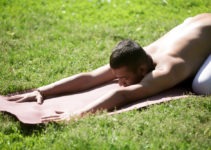
Experiencing muscle tension can be uncomfortable and even debilitating at times. However, through the consistent practice of effective stretching exercises, you can find relief and improve your overall well-being. By incorporating a variety of stretching techniques, you can target specific muscle groups and release built-up tension, promoting better flexibility and range of motion. In this guide, we will explore a range of stretching exercises that not only provide tension relief but also contribute to a healthier and more relaxed body.
Key Takeaways:
- Consistency is Key: Regular and consistent stretching exercises can help in relieving muscle tension and improve flexibility over time.
- Target Specific Muscle Groups: Focus on stretching exercises that specifically target the tight or tense muscles to effectively alleviate muscle tension.
- Breathing and Relaxation: Incorporating deep breathing and relaxation techniques while stretching can aid in reducing muscle tension and promoting overall relaxation.
Types of Stretching Exercises
Now, let’s discuss the different types of stretching exercises that can effectively relieve muscle tension. These exercises include static stretching, dynamic stretching, ballistic stretching, and proprioceptive neuromuscular facilitation (PNF) stretching. Any effective stretching routine should incorporate a variety of these techniques to target different muscle groups and improve overall flexibility.
| Static Stretching | Focuses on stretching a muscle to its farthest point and holding that position for a sustained period. |
| Dynamic Stretching | Involves moving parts of your body and gradually increasing reach, speed of movement, or both. |
| Ballistic Stretching | Utilizes bouncing movements to stretch muscles and is often used by athletes to improve flexibility. |
| Proprioceptive Neuromuscular Facilitation (PNF) | Combines passive stretching and isometric stretching to achieve maximum flexibility. |
| Myofascial Release | Focuses on releasing tension in the myofascial connective tissues to reduce pain and improve muscle function. |
Static Stretching
Stretching is a simple yet effective form of exercise that targets specific muscles or tendons to improve flexibility and relieve muscle tension. In static stretching, you slowly and gradually stretch a muscle to its farthest point and hold that position for a sustained period, typically 15-30 seconds. This type of stretching is most effective after a workout or as part of a daily stretching routine to improve overall flexibility.
Dynamic Stretching
Stretching before a workout is essential to warm up your muscles and prevent injury. Dynamic stretching involves moving parts of your body and gradually increasing reach, speed of movement, or both. This type of stretching is beneficial for athletes as it mimics the movements they will perform during their sports activities, preparing the body for optimal performance. Incorporating dynamic stretching into your pre-workout routine can help improve flexibility, enhance athletic performance, and prevent muscle strain.
Stretching with controlled movements, dynamic stretching is an effective way to prepare the body for intense physical activity. It engages the muscles and increases blood flow, reducing the risk of injury while improving flexibility and range of motion.
Ballistic Stretching
With ballistic stretching, you use bouncing movements to stretch the muscles beyond their normal range of motion. This type of stretching is often used by athletes to improve flexibility and performance, but should be approached with caution as it can increase the risk of muscle strain or injury. Static stretching and dynamic stretching are generally considered safer and more effective for most individuals, especially those new to stretching exercises.
Static, dynamic, ballistic, and PNF stretching techniques can all be effective for relieving muscle tension and improving flexibility. However, it’s important to choose the right type of stretching for your specific needs and to perform each exercise with proper technique and caution to avoid injury. An effective stretching routine should incorporate a combination of these techniques to target different muscle groups and achieve the best results.
Step-by-Step Guide to Effective Stretching
After understanding the importance of stretching for muscle tension relief, it’s crucial to know the proper techniques and step-by-step instructions for effective stretching. Below is a breakdown of the warm-up techniques, step-by-step instructions for key stretches, and the cooling down process.
Warm-up Techniques
Guide your body through a proper warm-up routine to prepare for effective stretching. Incorporating light cardio exercises such as jogging or jumping jacks for 5-10 minutes can help increase blood flow to the muscles and improve flexibility. Follow this with dynamic stretches that focus on the major muscle groups, such as arm circles, leg swings, and torso twists, to further loosen up the body.
Step-by-Step Instructions for Key Stretches
One of the essential elements of an effective stretching routine is performing key stretches with proper technique and form. Below is a table outlining the step-by-step instructions for key stretches, including the hamstring stretch, hip flexor stretch, chest stretch, and calf stretch.
Stretch |
Instructions |
| Hamstring Stretch | Gently lean forward from the hips, keeping the back straight and feeling a stretch in the back of the thighs. |
| Hip Flexor Stretch | Step forward into a lunge position, keeping the back knee off the ground and feeling a stretch in the front of the hip. |
| Chest Stretch | Extend your arms straight back, clasp your hands together, and lift your chest to feel a stretch in the chest and shoulders. |
| Calf Stretch | Step one foot back, keeping the heel on the ground, and lean forward to feel a stretch in the calf muscle. |
With proper execution, these key stretches can effectively target muscle tension and improve overall flexibility and mobility.
Cooling Down
Effective cooling down is crucial to gradually bring the heart rate and body temperature back to normal levels. Incorporate static stretches to help relax the muscles and prevent post-exercise soreness. Focus on major muscle groups such as the thighs, hamstrings, calves, and upper body to ensure a comprehensive cool-down process.
Body awareness and breathing techniques can further enhance the cooling down process, promoting relaxation and aiding in the recovery of the muscles after a stretching routine.
Factors to Consider
Not all stretching exercises are created equal. When it comes to relieving muscle tension, it’s important to consider various factors to ensure that the stretches you perform are effective and safe. Understanding your body’s limits, implementing proper techniques, and considering your current physical condition are all key aspects to keep in mind. For more information, check out Relieve Muscle Tension with 5 Simple Stretches.
After all, the goal is to alleviate muscle tension and improve flexibility through stretching, so it’s crucial to approach your routine with consideration and care.
Tips for Safe Stretching
Any effective stretching routine begins with a few key tips to ensure safe and beneficial results. First and foremost, always warm up your muscles before beginning any stretching exercises. This can be done through light cardio, such as walking or gentle cycling, to prepare your body for the stretching ahead. Additionally, it’s important to hold each stretch for at least 15-30 seconds to allow your muscles time to relax and elongate. After all, rushing through stretches can lead to injury rather than relief.
Understanding Your Body’s Limits
Limits, when it comes to stretching, refer to the maximum range of motion that your body can safely achieve without causing strain or injury. Understanding your body’s limits is crucial for effective and safe stretching. It’s important to listen to your body and avoid pushing past the point of discomfort. Always aim for a gentle stretch that you can hold comfortably without experiencing pain. By respecting your body’s limits, you can gradually increase your flexibility and reduce muscle tension without risking injury or strain.
The key is to approach stretching exercises mindfully, paying close attention to your body’s signals and being patient with your progress. By doing so, you can develop a stretching routine that effectively relieves muscle tension and improves your overall physical well-being.
Pros and Cons of Various Stretching Techniques
To effectively relieve muscle tension, it’s important to understand the pros and cons of different stretching techniques. Here’s a breakdown of the advantages and disadvantages of various stretching methods:
Stretching Technique |
Pros and Cons |
| Static Stretching | Pros: Helps improve flexibility; Cons: May not be effective for warming up before exercise |
| Dynamic Stretching | Pros: Mimics movements in sports or physical activities; Cons: Requires good coordination |
| Ballistic Stretching | Pros: Can help improve flexibility quickly; Cons: High risk of injury if not done properly |
| Proprioceptive Neuromuscular Facilitation (PNF) Stretching | Pros: Effective for increasing range of motion; Cons: Requires a partner for assistance |
Benefits of Regular Stretching
An effective stretching routine offers numerous benefits for muscle tension relief. Regular stretching can help increase flexibility, improve posture, and reduce the risk of injury. It also promotes better blood circulation, which can enhance muscle recovery and overall relaxation. Moreover, stretching exercises can contribute to better athletic performance and functional movement patterns.
Potential Risks and How to Avoid Them
Any stretching routine comes with potential risks if not performed correctly. Overstretching can lead to muscle strain or injury, while improper techniques may cause joint pain or discomfort. To avoid these risks, it’s crucial to start with a gentle warm-up, listen to your body’s limits, and avoid bouncing or jerking movements during stretching. It’s also important to seek guidance from a fitness professional to ensure proper form and technique, especially for advanced stretching methods like ballistic stretching or PNF stretching.
Potential risks from stretching exercises include muscle strain, joint pain, and injury. It’s important to approach stretching with caution and proper knowledge to avoid these risks and gain the full benefits of muscle tension relief.
Final Words
Presently, effective stretching exercises have been shown to be an invaluable tool for relieving muscle tension. Incorporating these exercises into your daily routine can lead to increased flexibility, reduced muscle soreness, and overall improved physical well-being. By focusing on specific muscle groups and holding each stretch for a sufficient amount of time, you can experience significant relief from tension and tightness. It is important to consult with a professional or a certified fitness instructor to ensure you are performing the stretches properly and safely. With consistency and dedication, these stretching exercises can become a powerful resource for managing muscle tension and promoting a healthy, balanced body.
FAQ
Q: What are effective stretching exercises for muscle tension relief?
A: Effective stretching exercises for muscle tension relief include hamstring stretches, quadriceps stretches, calf stretches, shoulder stretches, and neck stretches. These stretches help improve flexibility, reduce muscle tension, and promote relaxation.
Q: How often should I perform these stretching exercises?
A: It is recommended to perform stretching exercises for muscle tension relief at least 2-3 times a week. However, if you are experiencing discomfort or muscle tension, daily stretching can provide significant relief.
Q: Can stretching exercises help prevent muscle tension?
A: Yes, regular stretching exercises can help prevent muscle tension by improving flexibility, enhancing blood circulation to the muscles, and reducing the risk of injuries. Incorporating stretching into your daily routine can promote overall muscle health and reduce tension build-up.
Q: Are there specific breathing techniques to use during stretching exercises for muscle tension relief?
A: Yes, deep and controlled breathing is essential during stretching exercises. Inhale deeply as you prepare for the stretch, and exhale slowly as you ease into the stretch. This breathing technique helps relax the muscles and enhances the effectiveness of the stretch.
Q: What are the benefits of incorporating yoga into muscle tension relief exercises?
A: Yoga offers a holistic approach to muscle tension relief by combining stretching, strengthening, and relaxation techniques. Practicing yoga poses can improve muscle flexibility, reduce stress, and promote overall well-being. Additionally, yoga helps release tension in the body and the mind, leading to a sense of physical and mental ease.




